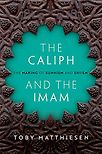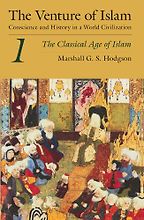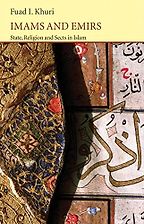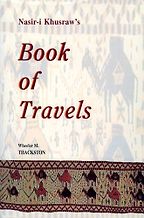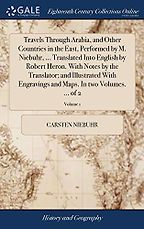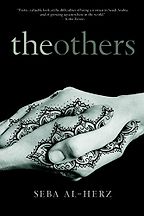Your book looks at the conflict between the Sunni and Shia strands of Islam and how they came into being. What’s the best approach to understanding this topic?
This is a topic that has been around for decades. Then, after the invasion of Iraq, there was a lot of violence and there were two strands of thinking about it, both of which offered very simple explanations. One, which came more from the Middle East, said, ‘This has all been invented’ or ‘This was something that happened because the state broke down and civil strife started.’ The other, which came more from the US and its allies said, ‘No, this has been going on for 1,400 years. Sunnis and Shias have always been at each other’s throats. The invasion just gave room for these primordial sentiments to play out.’ It was a convenient way to explain their failure in Iraq.
I wanted to look at what the relations between Sunnism and Shiism were, how the two came about, and why it matters. Some say it’s a core conflict in Islam, others that it emerged suddenly after the Iranian Revolution or the Iraq War or even that it might be a colonial conspiracy. The book is really a long response to these simplistic answers to the whole question. Initially, I didn’t want it to be such a long book—but some of the periods are so complex I needed to give them enough space. That’s why I decided to divide the book into four parts, which deal with different periods and parts of the explanation.
I suppose you can’t understand it without going right back to 632, when the founder of Islam, Muhammad, died and there were differences over who should succeed him. Do you have to cover the whole history since then?
You don’t necessarily have to, but my book does. It means people who don’t know anything about the topic can read it, but also people who know something about one part of the topic or a specific period can look at the other parts to find out a lot of things they didn’t know.
What’s really important is that I’m not saying there was a huge conflict that has been going on since the death of the Prophet between two clearly defined groups. Until the 19th or 20th century, people didn’t even know what Sunnism and Shiism were, or which one they were, in some parts of the Islamic world. On the religious level, I tried to be very nuanced about that. On the other hand, from quite early on, you had local rulers—and then afterwards wider Muslim dynasties—that embraced one interpretation or the other and then used that to legitimize themselves and to legitimize war or conquest of their neighbors. So there is also that legacy of a politicized tension that interacts with the religious, sectarian divide.
How much of the world are you covering in the book?
The geographical reach is primarily from Egypt to India. I cover the East India Company and British state control of India, the Persian Gulf and much of the Middle East, and then also French colonialism, especially in Lebanon and Syria. Later on, there are the American interventions in the Middle East. What I’m trying to do is connect these stories about Islam and histories of the Islamic world with global history, or with global politics—especially Western interventions in the Islamic world because they were so crucial in strengthening sectarian boundaries, in law or in the state system. It was the British and French who drew the boundaries and set up the modern states in the Middle East, so they were incredibly influential in institutionalizing sect as a political category. For example, in Lebanon that system is still there—and it dates back to the French period.
Is there an ethnic dimension to sectarian differences? Are Sunnis more likely to be Arab?
This is one of the stereotypes that the book is trying to problematize. It’s one of the easy explanations. Most Arabs in the world are Sunni Muslims, but there are also many Arab Christians, and there are many Shiite Arabs, too. As I show in the book, from the first Arab Muslim conquests of Iran, it took many, many centuries for Iran to become primarily Shia. At first, Iranians largely converted to Sunnism. It was only in about 1500, when the Safavids established their state in Iran and converted Iran to Shiism, that Iran became so closely associated with Shiism and most Iranians became Shia.
“It’s a central, vast area of the world that is influenced by Islam in one way or another”
And, of course, the earliest Shia were all Arabs. The founding imams and founding fathers of the Shia are descendants of the Prophet, so they are Arabs—the noblest Arabs of all. But after 1500, there is an element whereby, while Shiism becomes important to Iranian nationalism in various ways, Sunnism becomes quite important to powers rivalling Iran. As usual, things are a bit more complicated below the surface.
Let’s turn to the books you’ve chosen that shed light on Sunnism and Shiism. How did you pick them?
They’re really quite eclectic. Many of them are primary sources that I used in the book and that symbolize different periods. Two are travel accounts, one is a novel and two are older academic books. So, I’ve chosen different approaches, different ways of looking at the issue.
Let’s start with the history book, which is a three-volume work called The Venture of Islam (1974). It’s by Marshall Hodgson (1922-1968) who was a historian at the University of Chicago.
This was perhaps the most influential book for my own work. It’s a groundbreaking study of the whole history of the Islamic world. Marshall Hodgson didn’t live very long, and it was published after his death—but he became a very influential historian of the Islamic world. One of the things that the book does is it connects different parts of the Islamic world. He connects the Middle East with Iran and Central Asia and also with South and Southeast Asia. He looks at Islamic civilization as a whole, with a world history perspective. He coined the term ‘Islamicate’ to describe things that are influenced by Islam as a culture but are not religious. He spoke of the ‘Islamicate world.’
His book is still so influential. For me, it was inspiring because he takes Shiism very seriously. Iran is a central node in his book. He also sees 1500 as a strong break between the early Muslim empires and the early modern Muslim empires.
When you say he takes Shiism seriously, what do you mean?
Most accounts of Islam don’t devote much time to Shiism. Historically, it was seen as a sect. The early Orientalists, writers who wrote about Islam and Islamic history—perhaps influenced by engagement with the Sunni Ottoman Empire—gave us an account of Islam which was the Sunni view. Then they said, ‘There’s also the Shia view’ and devoted perhaps a few pages to it. Marshall Hodgson really put that relationship between Sunnism and various forms of Shiism as one of the main themes of the book and places Iran at the heart of wider Islamic history.
Does the book go right the way through from the 7th century to when it was published?
Yes. It was put together after his death, so it doesn’t really have footnotes. The footnotes that it does have are often just sideswipes against colleagues he didn’t like. So the book is infamous in many ways. I went in the opposite direction in my book, referencing extensively. Since the 1960s there has been an explosion in scholarship on various aspects of Middle Eastern and Islamic history. I really tried to draw on all these subfields for the book. I also wanted to do justice to all these scholars who’ve written about specific people or places or ideas or movements.
There have been many critics of Marshall Hodgson. The book is now 50 years old and there have been a lot of developments, both historically and in the literature. But, overall, his book was an inspiration for me. I read it as a student. It’s one of the earliest global histories and it places the Islamic world, from North Africa all the way to Indonesia, at the heart of global history. If you think about it, that does make sense. It’s a central, vast area of the world that is influenced by Islam in one way or another, and that is central to the making of the modern world.
Is it bedtime reading?
It is an amazing book, but it’s probably not bedtime reading. It’s three volumes, and they’re all pretty big. You will probably fall asleep, but that’s not what we mean by bedtime reading. It’s pretty well written for an academic history book.
Okay, let’s go to your next book: Imams and Emirs: State, Religion and Sects in Islam by Fuad Khuri. This was first published in 1989, but it’s been updated more recently.
Fuad Khuri (1935-2003) was a Lebanese anthropologist. In a way, he wrote the first political sociology of Islam and sectarianism, looking at the importance of sectarian identity in politics, in society and in state formation. He wrote important books about Lebanon and also about Bahrain. One of his first books was about Sunni-Shia relations in Bahrain and state formation. He also did fieldwork in other parts of the Islamic world.
This is a very short book but a very clever account of different parts of the Arab world, including Yemen, but also his native Lebanon, the Gulf etc. Again, it’s a bit of an old book now and you can make conceptual criticisms. But as a student it was a very influential book for me. It zooms in on different countries and different religious groups and looks at how they organize themselves politically.
The book focuses a lot on smaller sects, like the Alawites, rather than Sunnism and Shiism in general, doesn’t it?
Yes, it’s about Alawites, different Christian groups, the Druze, and the Zaydis in Yemen. The reason I chose it is because, conceptually, he took the importance of sectarian identity seriously. There were many scholars and historians who brushed it aside, but he grew up in Lebanon and had to flee during the Lebanese civil war and he took those dynamics seriously.
He did fieldwork in Bahrain, where I also did fieldwork. I wrote my PhD on the Shia community in Saudi Arabia and the Gulf. His book was one of the only ones that looked at the relationship between politics and sectarian identity. It’s a classic.
Does the title of your book, The Caliph and the Imam, have slight echoes of his?
It does a bit and that’s why I put his book on my list. In his case, Imams and Emirs related more to local rulers with some religious authority, like the Zaydi imams, or the emirs of Mount Lebanon. In my case, the imams and caliphs refer to some of the archetypes of Sunni and Shiite religious and political organization. For Shia, it’s the ‘imamate’ and for Sunnis, it’s the ‘caliphate.’ I’m looking at the political and religious leadership.
Next on your list of books to understand Sunnism and Shiism is Nasir Khusraw’s Book of Travels. He’s a medieval Persian poet travelling around the Islamic world. This looks really interesting.
Yes, this is an incredibly famous book. It’s still widely read in Iran, but also beyond. Nasir Khusraw travelled in the mid-11th century. At the time, there were many little Shia states and some larger ones. It’s the one century when Shiism looked like it was going to become the mainstream of Islam and it’s sometimes called the Shia century. You had the Fatimids in Cairo, which was an Ismaili Shia dynasty that ruled over much of the Mediterranean and parts of the Middle East. In many parts of the Islamic world, you had Shia movements strengthening and consolidating themselves.
Five Books interviews are expensive to produce. If you're enjoying this interview, please support us by donating a small amount.
Nasir Khusraw travelled around for several years during this period, and this is his account of his travels. What’s special about it is that it’s from an Ismaili Shii perspective. He writes about some communities that we otherwise wouldn’t know about: they are almost only mentioned in his book. He also outlines the wider struggles between the Seljuks, a Sunni Turkic dynasty who are rising and challenging the Fatimids and Abbasid caliphate in Iraq.
He really travels very, very widely. It’s a fantastic read and a very important source. He’s a bit less famous than Ibn Battuta, for example, or Ibn Jubayr, but those travel books were written more from a Sunni perspective. Also, the other famous travel writers were a bit later.
I read the part where he’s going around 11th-century Jerusalem.
Yes, he goes to all the holy places and on pilgrimages, whenever he can. There are many other things in the book, which don’t relate to my book.
For my account, another important thing about this book is that it shows how people were able to travel. Not that many people travelled, but if you wanted to, and had the means, you could travel for years. You could cross religious and political boundaries without too many problems, especially if you didn’t proselytize too openly. It’s not as if the Sunni and Shiite states were somehow hermetically sealed off, and you couldn’t move between them.
So it’s a look at a pre-modern Islamic world where yes, there are competing ideas and so on, but borders aren’t really established. Things are pretty much in flux, still, and people can change their religious identity over the course of a lifetime.
Let’s move on to the other travel book you’ve recommended which is by Carsten Niebuhr, an 18th-century mathematician and cartographer. Tell me how his book, Travels through Arabia and Other Countries in the East, fits in.
This is the archetypal text of a European traveller who travels through the Arab and Islamic world. Carsten Niebuhr came from the borderlands between Germany and Denmark, and he’s in the service of the Danish crown. He’s part of a Danish exploratory expedition, one of many European expeditions in the 18th century. He comes from a European background with a history of sectarian conflict. Catholics and Protestants had just fought many, many decades of war. Denmark was quite Puritan. In a sense, he has a sectarian mindset from home. He’s aware that people of the same religion quarrel amongst themselves and he thinks that’s an important thing.
“Most histories of Islam don’t focus on India”
So when he travels across the Arabian peninsula, and then further east, he records meticulously what people say. This is the time when the Wahhabi movement was emerging on the Arabian peninsula. He encounters the Yazidi imams in Yemen, the Ibadis in Oman and Shia in the Gulf and Bahrain. He also goes to Iraq. He visits Karbala and the holy places in Iraq. Everywhere, he hears of people being afraid of the Wahhabis, and trying to mobilize their own resources to counter them.
He’s a witness to these early modern, intra-Muslim conflicts that are bursting out. But he’s also a European traveller, an early example of colonial recognition of religious boundaries amongst Muslims. Again, this book is a very important primary source, though it has also been criticized very often. It shows how Europeans started looking at the Middle East and the wider Islamic world and saying, ‘There are all these sects and they don’t get along.’
And, at this point, was it getting harder to cross borders from Shiite to Sunni areas?
Not for him, because he was a foreigner. We’re already in a period when the European powers dominate the seas. He’s one of these classic European travellers who can cross borders. But for others, yes, it would have been harder, and he witnesses that hardening. He’s both a witness to the hardening of sectarian identities, and one of the people who makes them deeper, in a sense, by writing about them.
Finally, you’ve recommended a novel from 2009. It’s by Seba al-Herz and it’s called The Others. Tell me about it.
So this novel was written under a pseudonym by a Saudi, probably a Saudi woman. It describes the lives of young Saudi Shia women in the country’s Eastern Province. They go to school, they fall in love with each other. It shows the day-to-day discrimination they face from other Saudis.
I wrote my PhD on the Eastern Province, and on Saudi Shia, and I thought this book was just a very good way of describing the social reality of people from different religious backgrounds living with each other, but one perhaps being the more dominant, and the other the more suppressed and less-known. In the day-to-day interactions in the school, you see that there is a lot of prejudice that people have.
Is the book available in Saudi Arabia?
No, but it became a huge success outside. It broke two huge taboos: one, the sexual taboo and the other the sectarian taboo by outlining the life of a young Shia woman, and the problems she faces. The book is very famous in the Arab world, and also in Saudi Arabia.
Is it a good read?
Yes, that’s why I included a novel. Carsten Niebuhr is also a very good read. As is Nasir Khusraw. I didn’t choose too many academic books. I’ve been asked a couple of times to suggest books to read on the topic, but here I’ve chosen books that are interesting in and of themselves, including as primary sources or as examples of how the subject has been written about historically.
Presumably, lots of people have written about the history of Sunnism and Shiism before. What was the gap you were filling when you decided to write your book? Is it that previous books were just focusing on a particular era, like the early years after Muhammad died, or a particular country?
There are lots of books that deal with a sub-aspect, or with one period or one country or region, but no one had really put it all together. There are also some shorter books that deal with the history of Sunnis and Shias. But I wanted to give the subject a full-length treatment, and that is why the book became so long. Some of these other books make one argument, saying, ‘It’s all the modern state’s responsibility’, or ‘It’s all about international politics and military intervention in the Middle East.’ Or, ‘It’s all about the early period.’ I tried to take on all these different hypotheses and see how much of the wider relationship they could explain.
Then I realized I had to write a book in which each period has its place, but also, importantly, where the Middle East connected with the Indian subcontinent and Central Asia and Iran and Afghanistan were front and centre. India actually played a very important role, especially in the colonial period, but also before. Most histories of Islam don’t focus on India. I tried to connect these very strongly. Over many centuries, when people had to flee from the conquests of Iran or Afghanistan, they went to India and you had very strong Shia states being established. They had a lot of patronage to offer and they, in turn, managed to fund scholarship and shrines back in Iraq. British colonial rule then proved consequential. From the 18th century onwards, in India, the East India Company established Sunnism and Shiism as two separate legal categories. This was something that was then, much later on, taken up in the Middle East. So, I figured that not only connecting different periods but also connecting different places was really important.
Five Books aims to keep its book recommendations and interviews up to date. If you are the interviewee and would like to update your choice of books (or even just what you say about them) please email us at [email protected]

